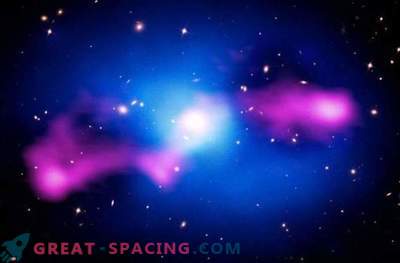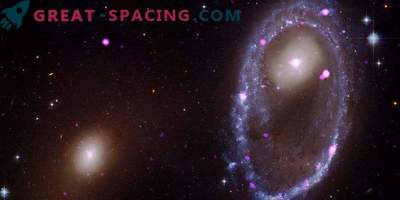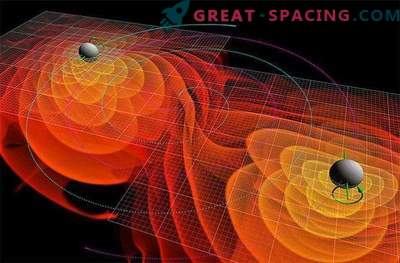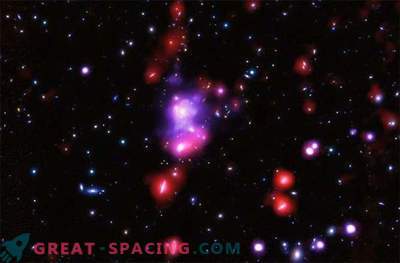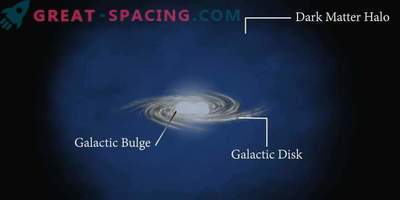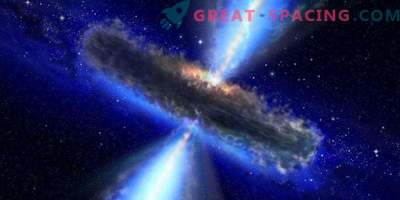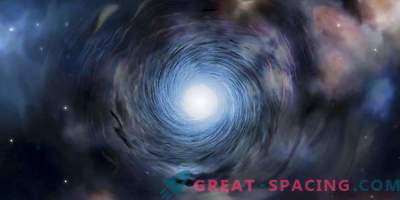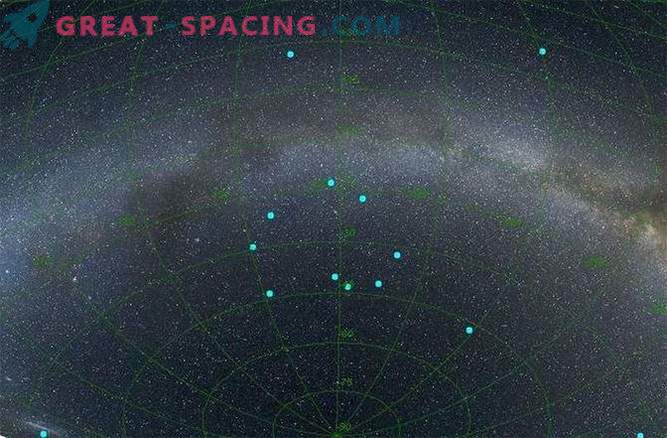
We are accustomed to the constant reports of astronomers that the "most remote", "most massive" or "most active" objects of our Universe are open. But today, scientists announced the discovery of a truly grandiose structure consisting of a ring of galaxies with a diameter of 5 billion light years.
The galactic ring, which was detected by nine recorded gamma-ray bursts or gamma-ray bursts (GRB), is 7 billion light years from Earth, and covers an area seventy times the diameter of the full moon on the firmament. Gamma-ray bursts are believed to occur when a massive star ends its existence. "Having developed fuel," the star explodes, forming a black hole, and emits a large amount of energy, in the form of collimated rays.
If these rays are directed towards the Earth, they can be used as beacons to help record the distance to the gamma-ray burst and determine the location of the new galaxy. All registered gamma-ray bursts are cataloged under the name Gamma-Ray Bursts Online Index.
Astronomers have suggested that the recorded gamma-ray bursts are somehow interconnected, because nine sources of radiation are practically at the same distance from the Earth. With a probability of one to twenty thousand, this cannot be the accidental appearance of gamma rays in space. All of them are associated with the galactic ring - the structure of which is not embedded in the existing cosmological model. "If the ring is a real spatial structure, then it is most likely deployed by its plane to us, because the distances between the GRB have too little error relative to the center of this object," said Laos Balos from Konkole Observatory in Budapest. "The ring can also be a normal projection of a sphere, where all gamma radiation occurred during a period of 250 million years, which is too short a time interval compared to the age of the Universe."
But, what could be the reason for the creation of a sphere measuring 5 billion light years across? Based on the theories of most cosmological models, in the Universe there should be an approximately uniform distribution of matter, over the whole vast space. On the basis of the "Cosmological Principal", structures cannot exist in space larger than 1.2 billion light years. But the growing list of discoveries in the study of outer space indicates that a figure of 1.2 billion light years is not the limit for the Universe. In 2013, based on the obtained GRB, astronomers discovered a space structure measuring 10 billion light years. And the last discovery - the ring of galaxies - is not the largest. Despite this, the detected galactic ring is five times the set limit, an extremely huge anomaly that is not subject to any standardization. But what could be the cause of GRB radiation directly within the ring? One of the ideas focuses around the hypothesis of a large-scale structure of the Universe, where a cluster of galaxies has a network resemblance, concentrating around some black matter. In the "holes" of this network are voids - areas of space in which there is no matter at all. The largest voids are called "super-voids." But, the found new structure overshadows all known "super-emptiness". “If we are right, this galactic ring-shaped cluster contradicts the existing theory about the model of the Universe. This huge surprise that we discovered is still not completely understood. Neither its origin, nor its existence,” Balash added.
So what happens is the "Cosmological Principal" is not true? It definitely intrigues space explorers.
